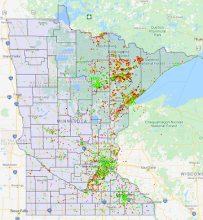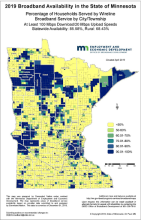
Fast, affordable Internet access for all.
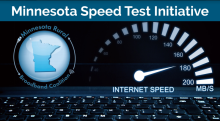
If you live in the land of ten thousand lakes, your help is needed. The Minnesota Rural Broadband Coalition has launched a speed test initiative to collect much-needed data from everyone in the state so that lawmakers and stakeholders can better direct broadband expansion efforts now and in the future. Hop over to the speed test page and give them a hand.
Data, Data, Data
The Minnesota Rural Broadband Coalition (MRBC) — which is made up of over a hundred utilities, cooperatives, regional development commissions, nonprofits, private companies, and rural and urban interest groups — has worked for years with local communities and in the state capitol to advocate for more funds and help local communities address Internet access imbalances across the state. The initiative is the latest mark of their efforts, asking Internet users to input their addresses and how much they pay their Internet Service Provider (ISP) to get a better sense of speeds, availability, and prices.
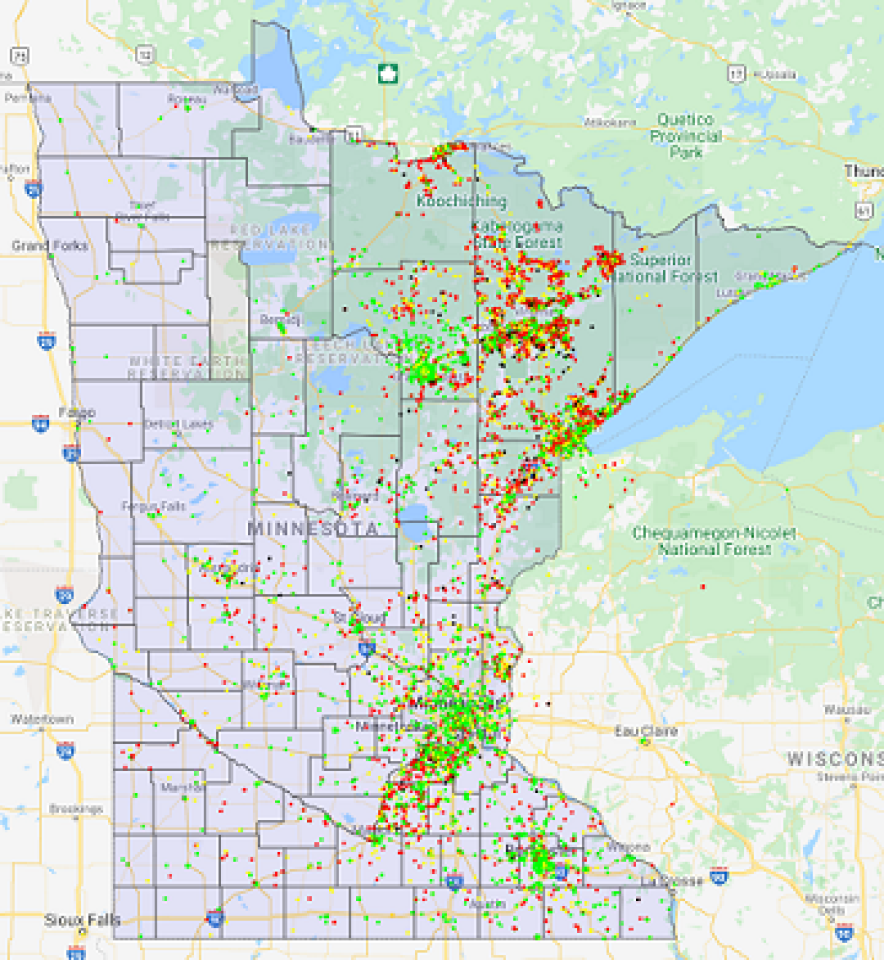
To date, they’ve gotten results from a little over 15,000 tests in 11,000 locations. There are predictable problem areas in the northeast part of the state, and according to the map just under 7% of locations are unserved so far. Saint Louis, Itasca, and Carlton Counties account for the bulk of the tests outside of the metro area, though Minnesotans in Scott and Le Sueur Counties south of the 169 corridor are also putting up a strong showing.
We’ll be interested to see the report the group puts out once the test is complete and the data have been analyzed, but initial qualitative results show great news for those living in areas with cooperatives and other nonprofits and less-great news for those in areas with some of the problem monopoly ISPs. Subscribers of Paul Bunyan Communications (which started life as a telephone cooperative), for instance, enjoy high symmetrical upload and download speeds that should be serving those forced to work, visit the doctor, and grocery shop from home well. 406 results from the ISP in Itasca County show an average of 74 Megabits per second (Mbps) both up and down. Their neighbors who subscribe to CenturyLink, Frontier, and Viasat are in worse shape. CenturyLink’s average is running just 17/3 Mbps, Frontier’s is at 7/2 Mbps, and Viasat’s is at 13/6 Mbps. If you’re interested in learning more about how, where, and why big cable and telecom companies like these invest in some places and not others, read our recently released 2020 Profiles of Monopoly report.
Challenges Remain
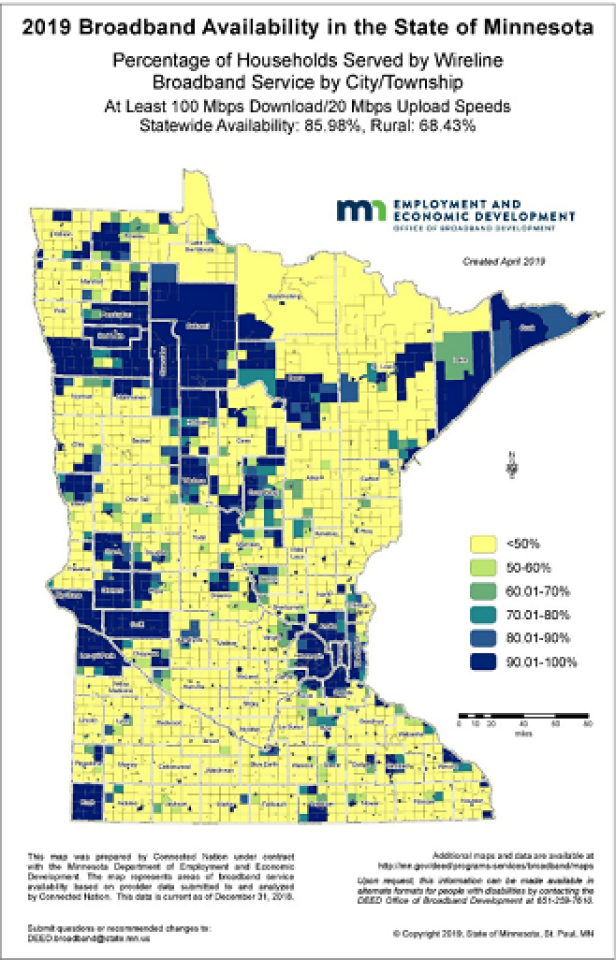
A host of Minnesotans across the state face connectivity challenges, and some 150,000 households lack wireline Internet access. That’s 12.5 times more unconnected households than there are loons in the state. About 7% of all Minnesotans lack 25/3 Mbps service, though that number jumps to 17% in rural areas.
The state’s Border-to-Border Broadband Development Grant Program was created in 2014 to facilitate broadband expansion to unserved or underserved communities. Notably, the state defines underserved communities as those with current access to at least 25/3 Mbps service but less than 100/20 Mbps, which the Office of Broadband Development has set as the goal for connecting all Minnesotans by 2026. In the 2020-21 period, $40 million has been appropriated for the program, though the MRBC and other groups have called for an additional $30 million to be added. For more on who can apply read our coverage of the grant application window, and for a comprehensive look at what the program has gotten right and what could be improved, read our policy brief, Minnesota’s Broadband Grant Program: Getting the Rules Right.
Broadband surveys like this help in solving a host of challenges, including serving as a counter to poor Federal Communications Commission data (which is used to determine elegibility for federal funds) and convincing state lawmakers that this is an issue that can dramatically improve the lives of rural and urban Americans looking to get connected. States like Washington, North Carolina, Alabama, and others have likewise launched their own initiatives.
The current speed test initiative should help make the case to state lawmakers that more funding is needed, especially as Minnesotans continue to work, go to school, and conduct their rest of their lives from home. If you live there, here’s the link again. It just takes a minute.
